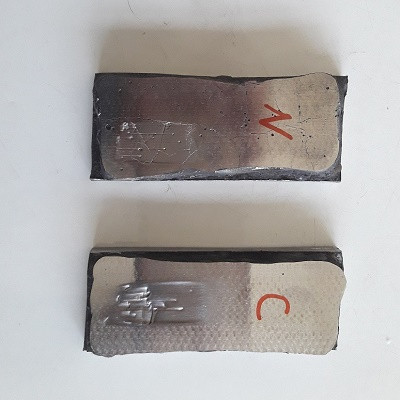| NAMAD |

| Registration Date | 28 Oct 2020 |
| Revision Date | 28 Oct 2020 |
| Share |
Construction Structural Materials
Cored WireElectrodes manufactured by Namadnanotech Company are part of the fourth generation of electrodes that produce sub-micron grained coatings with nanometer deposits on the surface of the part. Possibility of achieving a hardness of 65 Rockwell in one layer, at the same time high impact resistance, as well as wear resistance of 3 times more than the conventional hard-covered electrodes, deposition efficiency of more than 95% of the electrodes and positive feedback from pilot implementation in some domestic industries. Stability up to high temperature (750 ) Applicable to low alloy and plain carbon steels
Mineral extraction and processing are performed in different ways. Meanwhile, one of the problems of this industry is the wear of used parts and devices. The higher hardness of the minerals to which the devices are exposed, the greater wear and the higher cost of repairing and maintaining parts and devices are induced. Moreover, according to the high cost of replacing device parts, the several time uses of repair and maintenance methods can be justified. In order to prevent the wear of parts, there are various methods such as spraying methods, use of anti-wear plastics, and plating of metals. One of the most widely used methods is to create a coating on the surface of the part using the welding techniques. For this purpose, flux-cored wire (FCW) welding method is utilized. In fact, FCW is a continuous cylindrical metal sheath filled with various alloying elements and protective flux powder. A wide range of chemical compositions and metallurgical properties can be achieved using FCW. The widespread need of various industries and factories for repair and maintenance has made FCW an ideal option for welding. FCW has a much higher deposition rate (up to 95%) than manual electrodes and also produces much less heat than them. Today, this type of welding wire is extensively used in the world for the reconstruction and hard coating of metal parts. These wires are welded to the parts using the usual CO2 method or MIG/MAG.